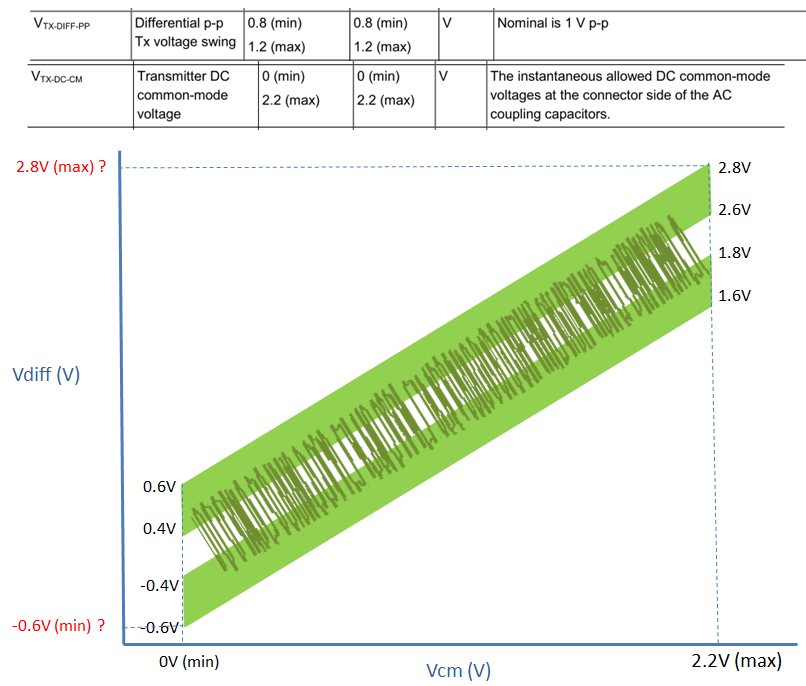Hi
May I ask two questions?
Reference:
HD3SS3212 Datasheet, 8.3 Recommended Operating Conditions on page 4, and Figure 7 on page 12
USB3.1 Specification(rev1.0), Table 6-17 on page 6-30 and Table 6-18 on page 6-31
<Question1>
HD3SS3212 DS specifies Vcm 0V min to 2V max, and Vdiff 1.8Vppd max as Recommended Operating Conditions
USB specification (rev1.0) defines Vtx-diff-pp 1.2Vpp max, and Vtx-dc-cm 0 to 2.2V on the Tables 6-17 and 6-18.
And Vcm at the device will be 0V by using AC coupling (Figure 7 in the DS).
Therefore I would like to confirm that HD3SS3212 will work at -06V to +6V swing (1.2Vppd) of USB3.1 specification.
<Question 2>
The figure 7 shows AC coupling capacitors between TYPE-C connector and HD2SS3212. On the other hand, Figure 8 and 11 (and Layout example) shows the capacitors between Host/Device and HD3SS3212. Isn't it necessary to put the coupling capacitors between the connector and HD3SS3212 because Vtx-dc-cm max is 2.2V but HDS3SS3212 Vcm max is 2V at recommendation (even absolute max is 2.5V)?
Best regards,
Masa



